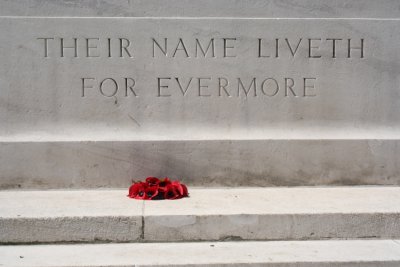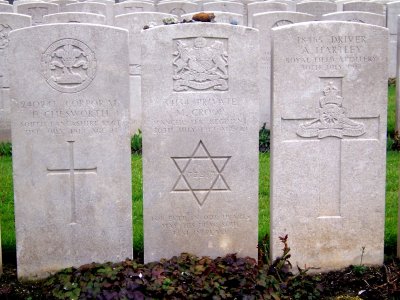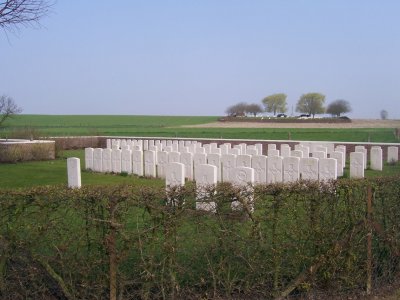
WWII: Maginot Line | Normandy | V-Weapon Sites | Arnhem
Further afield: Crete
| Home Tracing Military Ancestors Travel Advice CWGC Cemeteries Iron Harvest News Book Reviews Glossary Links Contact Me Battlefields:


|
Commonwealth War Graves Commission (CWGC) CemeteriesKey FeaturesThe most obvious reminder of the First and Second World Wars, that we see today, are the countless cemeteries dotted across northern France, Belgium, the Netherlands and northwestern Germany, maintained by the Commonwealth War Graves Commission (CWGC). There are 613 in Belgium alone, containing 102,497 identified and 48,555 unidentified burials – men from Great Britain, Ireland, Canada, Australia, New Zealand, South Africa, India and a myriad smaller outposts of Empire. The cemeteries vary in size from just a few dozen graves in the case of some “battlefield” cemeteries (begun on or near the frontline where bodies killed outright were interred during the conflict) to over 5,000 at some “concentration” cemeteries (where small outlying groups of burials were concentrated after the conflict had finished). Sometimes, these cemeteries are of both types – a good example being at Tyne Cot in the Ypres Salient, which was used as a battlefield cemetery during the conflict and acted as a concentration cemetery after it. Other cemeteries mark the position of Casualty Clearing Stations or Base Hospitals where those who died of their injuries are buried. However, despite their different sizes, types and locations, CWGC cemeteries do share a number of common features: Cemetery Design – The objective of the cemetery designers Lutyens, Blomfield and Baker, was to recreate the atmosphere and appearance of an “English country garden” with flowering plants, shrubs and trees enclosed by a stone (or flint) wall. In the larger cemeteries there are grander designs in portland stone, such as lowered flags, classical columns and pavilions, but CWGC cemeteries remain, for the most part, understated places of peace, tranquillity and quiet reflection. Cross of Sacrifice – Designed by Sir Reginald Blomfield, the Cross of Sacrifice (a white stone cross inlayed with a bronze sword) is a common feature of most cemeteries. Stone of Remembrance – Only found in the larger cemeteries, the sarcophagus-shaped stone designed by Sir Edwin Lutyens is inscribed with words chosen by Rudyard Kipling, “Their Name Liveth for Ever More”.
Cemetery Register – All cemeteries should have a bronze box, usually found near the entrance, which contains the cemetery register. This will include a plan and short history of the cemetery and its various plots, an alphabetical list of burials including personal details and a summary of the nationalities present within the cemetery and whether they are known or unidentified. Visitor's Book – Included with the cemetery register, it provides the CWGC with important information on visitor numbers and the visitor should make every effort to sign it. Headstones – Usually of portland stone, they include rank, name, regimental number, regimental crest, unit, age, date at death and religious affiliation (a cross for Christians, which make up the overwhelming majority, Star of David for Jews etc). The option was offered to families (except those in New Zealand) to add a short inscription at the bottom of the headstone if they so wished. Some of these are truly moving. Headstones for unidentified burials are inscribed with “A Soldier of the Great War. Known Unto God” also chosen by Kipling.
Note on BehaviourThe CWGC has never been in favour of erecting signs instructing visitors on how to behave in its cemeteries, assuming instead that we have enough good sense to act with the correct degree of decorum and respect for the memory of the fallen. This author fully supports this stance and does not intend to state the obvious here. It would indeed be a sorry state of affairs if we followed the example of the authorities at the United States Military Cemetery above Omaha Beach whose dictatorial signs, quite frankly, treat the visitor like an unruly child. CWGC GardenersIt just remains to say a word about the CWGC gardeners. On a cold March day in 2002, I accompanied a friend to put some flowers on a relative's grave at Lebucquière, one of the numerous CWGC cemeteries between the Somme battlefield and Cambrai. The cemetery is hidden at the back of this small village, down a dirt track, next to a farm. It's not a big cemetery by Western Front standards. The village and, needless to say, the cemetery were deserted. Indeed, according to the Visitor's Book the last visitor to pass by was 6 weeks previously. And yet, in spite of this, the 10-metre long path to the cemetery gate sported a precisely trimmed and lusciously green carpet of grass and the cemetery was heaving with colourful spring flowers and manicured shrubbery. It is a wonderful testament to the spirit and ethos of the CWGC and the sheer hard graft of its gardeners that even the smallest and most remote cemeteries receive the same attention to detail as the largest and most visited.
If you would like to find out more about the Commonwealth War Graves Commission and their work please visit http://www.cwgc.org/ |


